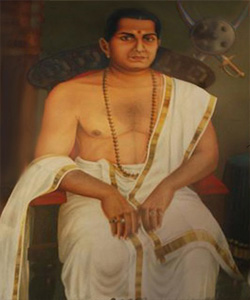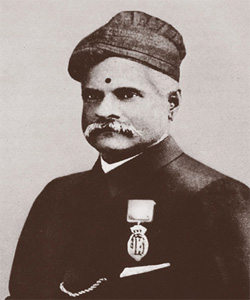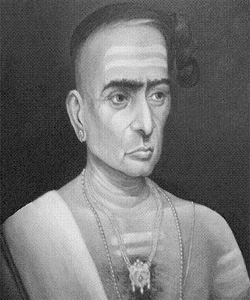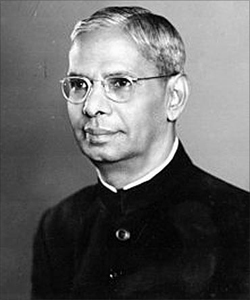 The early history of Cochin is shrouded in obscurity. Inscriptions and literary works give us the names of some of the early rulers of the illustrious dynasty that once ruled Cochin. Unni Rama Koil I was the ruler of Cochin when the Portuguese captain Cabral, landed in Cochin. Under him the trade facilities were granted to the Portuguese and a good relationship was established. Under Unni Rama Koil II the friendship with the Portuguese was strengthened and Cochin rose to political prominence. Vira Kerala Varma, the next ruler, kept up friendly relations with the Portuguese, but the plunder of the temple of Palluruthi imposed a heavy strain on their relations. It was during his reign that the war with the Vadakkumkur took place. It was to Vira Kerala Varma that the Portuegse presented the palace newly built by them at Mattancherryin 1555 A.D. The dynasty that ruled Cochin was 'Perumpadappu Swarupam' because Cochin was that part of Kerala which came under the eldest son of Cheraman Perumal's sister by Perumpadappu Nambudiri.
The early history of Cochin is shrouded in obscurity. Inscriptions and literary works give us the names of some of the early rulers of the illustrious dynasty that once ruled Cochin. Unni Rama Koil I was the ruler of Cochin when the Portuguese captain Cabral, landed in Cochin. Under him the trade facilities were granted to the Portuguese and a good relationship was established. Under Unni Rama Koil II the friendship with the Portuguese was strengthened and Cochin rose to political prominence. Vira Kerala Varma, the next ruler, kept up friendly relations with the Portuguese, but the plunder of the temple of Palluruthi imposed a heavy strain on their relations. It was during his reign that the war with the Vadakkumkur took place. It was to Vira Kerala Varma that the Portuegse presented the palace newly built by them at Mattancherryin 1555 A.D. The dynasty that ruled Cochin was 'Perumpadappu Swarupam' because Cochin was that part of Kerala which came under the eldest son of Cheraman Perumal's sister by Perumpadappu Nambudiri.
Cochin was a powerful kingdom in the years immediately following the disintegration of the Kulasekhara empire. But, its power gradually weakened due to dissensions in the royal family and the frequent invasions of the Zamorin. Four or five centuries of rivalry between these two powers was an important factor in the politics of Kerala. Thus at the time of the arrival of the Portuguese in Kerala, Cochin presented the picture of a house divided against itself. It was also engaged in a bitter conflict with the powerful Zamorin of Calicut. Vira Kerala Varma was succeeded by Kesava Rama Varma, the most outstanding ruler of Cochin in the Portuguese period. His was a long and eventful reign. He patronised poets and men of letters. It was during the reign of this ruler that the Jews settled in Cochin and built the Jew Town near the Raja's Palace. The reign saw a successful popular revolt against the Portuguese who had got the whole of the customs duties levied at Cochin assigned to them by the King through coercion. The famous Synod of Diaper (1599) was a notable event of this period. Kesava Rama Varma is believed to have died during his pilgrimage to Benares. The death being attributed due to natural causes.
 Ravi Varma, Vira Kerala Varma I, Goda Varma, Vira Raja Varma and Vira Kerala Varma II had uneventful reigns. Vira Kerala Varma's immediate successor was Rama Varma, and on his death Rani Gangodhara Lakshmi was appointed as Regent. She was the only woman who exercised ruling powers in the long history of the Cochin royal house. Rama Varma an adoptee from Vettanad, ascended the throne at the end of the regency. This ruler was killed in the fight before the Mattancheri palace in 1662 A.D. Goda Varma, another adoptee from Vettatnad who came to the throne in 1662, was overthrown by the Dutch after the surrender of the Cochin fort in 1663 and Vira Kerala Varma of the Mutha Tavazhi was installed on the throne of Cochin.
Ravi Varma, Vira Kerala Varma I, Goda Varma, Vira Raja Varma and Vira Kerala Varma II had uneventful reigns. Vira Kerala Varma's immediate successor was Rama Varma, and on his death Rani Gangodhara Lakshmi was appointed as Regent. She was the only woman who exercised ruling powers in the long history of the Cochin royal house. Rama Varma an adoptee from Vettanad, ascended the throne at the end of the regency. This ruler was killed in the fight before the Mattancheri palace in 1662 A.D. Goda Varma, another adoptee from Vettatnad who came to the throne in 1662, was overthrown by the Dutch after the surrender of the Cochin fort in 1663 and Vira Kerala Varma of the Mutha Tavazhi was installed on the throne of Cochin.
During the reign of Vira Kerala Varma began the period of subordination of Cochin to the Dutch. In March 1663 the first treaty between the Raja of Cochin and the Dutch East India Company was concluded. The Cochin ruler placed himself and his kingdom under the protection of the Dutch. In February 1665 a treaty was signed between the Dutch Company and the members of the Cochin royal family and Paliath Achan restricting adoption to the Cochin family from the Mutha Tavazhi and Chazhur branches. In September 1674 A.D. there was a fresh treaty prescribing allowances for the Cochin princes and bringing the Kingdom under the effective control of the Dutch. Under an agreement of May 1678 the Paliath Achan as Prime Minister was to look after the affairs of the kingdom of Cochin under the guidance of the Dutch. The King was reduced to the status of an ornamental figure-head. The Vettatnad faction was defeated by the Dutch. This period saw a commercial treaty between the Zamorin and the Dutch. This was a period of intense disappointment to the rulers of Cochin.
Ravi Varma I, an adoptee from the Chazhur branch was the next ruler. He conveyed to the Dutch his feeling of displeasure at the growing friendship with the Zamorin. In the reign of the next ruler, Rama Varma I, a treaty was concluded between the Dutch and Cochin under which the Raja was allowed a share of the customs duties. The war between Calicut and Cochin continued for nine years during the rule of Rama Varma. By the treaty of 1710, which terminated the war, some of the territories taken away from Cochin were given back to that State. But in 1715 the Zamorin renewed the military operations in the Cochin territory. The war was ended by the treaty of 1717 A. D for peaceful co-existence. Raja Rama Varma got back from the Zamorin all his ancestral territories except Perumpadappu and a few villages in Vanneri.
Ravi Varma II, the next ruler, was a weak ruler. The local nobles rose frequently in armed rebellion against his authority and the king had to spend much of his time in suppressing these rebellions. The Raja dismissed the Paliath Achan from the Prime Ministership of Cochin. With the approval of the Dutch the chief of Paliyam committed several acts of highhandedness and incurred the displeasure of the Raja and the Dutch Company. The estates of the chief lying outside Chennamangalam were confiscated. Meanwhile, the Paliyam Chief died and a new Achan succeeded to the post. The new chief apologised for the misdeeds of his predecessor and was reinstated to all the possessions and dignities of his ancestor.
Rama Varma II, the next Cochin King, was notoriously weak and oppressive. He came into clash with the Anchi Kaimals who were consequently given protection by the Dutch. The reign saw the rise in the power of the Paliath Achan and an increase in the extent of the estates owned by his family.
Rama Varma was succeeded by Kerala Varma and then by Rama Varma III. In the reign of the latter ruler, the members of the Chazhur branch rose in revolt, and to strengthen relations with Travancore. The reign of Kerala Varma saw the Mysorean invasion of Kerala. The Cochin Raja agreed to become a tributary of Mysore and to pay a `Nuzzar' of one lakh of pagodas.
Rama Varma IV was the next ruler of Cochin. He was a weak prince. Iin 1769 he relinquised all his authority to Dharma Raja, the next prince who was 26 years old at that time. The prince who was thus entrusted with administrative responsibility was a person of extraordinary ability and is known in history as Saktan Tampuran. Though he formally ascended the throne in 1790 A.D., he was in full charge of the administration of the State from 1769 onwards. During the reign of Rama Varma, the Raja of Cochin was called upon by Tipu Sultan to play the role of a mediator between Mysore and Travancore. This was done with a view to securing the subordination of the latter State to the former. But the Raja's effort only met with rebuff. Tipu brought large areas of Cochin territory under his control. Immediately after the exit of the Sultan, the Cochin Raja threw off his allegiance to Mysore and entered into a treaty with the English East India Company in January 1791.
 Rama Varma V, popularly called Saktan Tampuran - had in the meantime ascended the throne. He was an able administrator, diplomat and statesman. He followed the same policy in Cochin which Marthanda Varma followed towards the feudal nobles in Travancore. The reign of Saktan Tampuran was an epoch of economic and social progress in the history of Cochin. Syrian Christians who were settled in the chief towns carried trade and contributed to the commercial prosperity of the state. The Raja took steps to provide them with all amenities for carrying on trade. Markets were opened in all major cities. Special attention was bestowed on the repair and renovation of temples. Saktan Tampuran also took interest in the exceution of public utility works such as roads, bridges, lakes, rest houses etc. Irrigation works received special attention. Justice was administered without fear or favour in the Cochin kingdom during the reign of Saktan Tampuran. There was complete security of person and property as robbers and dacoits were relentlessly suppressed. Thus, on the whole, the reign of Saktan Tampuran was an important epoch in the history of Cochin. Like the reign of Marthanda Varma in Travancore,it saw the end of the feudal era in Cochin and the beginnings of a highly centralised administration under the personal supervision and guidance of the ruler.
Rama Varma V, popularly called Saktan Tampuran - had in the meantime ascended the throne. He was an able administrator, diplomat and statesman. He followed the same policy in Cochin which Marthanda Varma followed towards the feudal nobles in Travancore. The reign of Saktan Tampuran was an epoch of economic and social progress in the history of Cochin. Syrian Christians who were settled in the chief towns carried trade and contributed to the commercial prosperity of the state. The Raja took steps to provide them with all amenities for carrying on trade. Markets were opened in all major cities. Special attention was bestowed on the repair and renovation of temples. Saktan Tampuran also took interest in the exceution of public utility works such as roads, bridges, lakes, rest houses etc. Irrigation works received special attention. Justice was administered without fear or favour in the Cochin kingdom during the reign of Saktan Tampuran. There was complete security of person and property as robbers and dacoits were relentlessly suppressed. Thus, on the whole, the reign of Saktan Tampuran was an important epoch in the history of Cochin. Like the reign of Marthanda Varma in Travancore,it saw the end of the feudal era in Cochin and the beginnings of a highly centralised administration under the personal supervision and guidance of the ruler.
The period immediately following the death of Saktan Tampuran was one of political turmoil and hence very little progress could be achieved in the field of administration. The failure of the revolt of the Paliath Achan led to the installation of his rival Kunhikrishna Menon, with the approval of the British. Menon mismanaged the affairs of the State and brought it to the verge of financial bankrupcy. In 1812 he was sacked and Col. Munro, the British Resident, was appointed as Diwan of Cochin in order to reorganise the administration of the state on modern lines. From the time of Munro's appointment in 1812 till the abolition of the office of Diwan in 1947 Cochin was served by a long line of able Diwans.
Col. Munro embarked on with a methodical scheme of administrative reorganisation. He stamped out all elements of corruption and lawlessness. Munro modernised the administration of Cochin and paved the way for the progressive reforms introduced by the Diwans of later days.
Nanjappayya who succeeded Munro as Diwan of Cochin was an able administrator. The Western system of treatment was introduced. A proclamation was issued in 1812 forbidding the punishment of slaves by their owner. The survey and settlement of land known as `Kandezhuthu' were started in 1812 and completed in 1827.
Sheshagiri Rao and Edaman Sankara Menon who succeeded Nanjappayya were neither able nor enlightened administrators and hence they failed to leave their mark on the administration of the state. Venkatasubhayya, the next Diwan introduced several important administrative reforms. He issued elaborate regulations which brought the administration of justice in Cochin into line with that of British India. The Diwan gave priority to schemes for agricultural improvement. English schools were established instead of vernacular schools introduced by Col. Munro.
Sankara Warrier who succeeded Venkatasubayya as Diwan held office for 17 years. He was an able administrator and reformer and the reforms introduced by him helped to raise Cochin to the front rank of the well-governed states of India. A comprehensive programme of public works were carried out. In 1854 a proclamation was issued abolishing slavery and emancipating all the slaves in the state. Social services like educational and public health also claimed Sankara Warrier's attention. In 1845 the first Elementary English School was opened at Ernakulam-the nucleus of the Maharaja's College of the present day. The period of the Diwanship of Sankara Warrier was of liberal and progressive administration.
The immediate successor of Sankara Warrier was Venkata Rao, but he was unpopular and was removed from office in 1860. Thottakkat Sankunni Menon, the son of Sankara Warrier, then assumed charge as Dewan and held office for 19 years. His period of office was marked by improvement in every branch of administration. Several new roads, cannals, bridges and railway lines were constructed. The benefits of postal system were made available to the public. The Diwan put an end to the system of compulsory labour for State purposes as well as to the sale and purchase of slaves. These reforms introduced by Sankunni Menon earned for him a high rank among the administrators who laid the foundations of modern Kerala.
Govinda Menon, the brother of Sankunni Menon, was the next Diwan. He continued the liberal policies of his brother. He opened the first school for girls in Cochin state. Some of the disputes with Travancore in regard to boundaries and the right to the management of temples were settled during the period of the Diwanship of Govinda Menon.
Cochin. A.R.Banerji who followed as Diwan took various steps both in technical and administrative fields. J.W.Bhose who succeeded A.R.Banerji gave his attention to agrarian reforms. T.Vijayaraghavachari took genuine interest in the advancement of the backward classes. The industrialisation of Cochin was also given special attention.
Cochin came to have its Legislative council during the Diwanship of P.Narayana Menon under T.S.Narayana Iyer and C.G.Herbert.
 Sri. R.K.Shanmukham Chetti was Diwan of Cochin from 1935 to 1941. His period of office was marked by all round administrative progress. The Cochin Secretariat was organised on modern lines under his personal guidance. The Cochin Harbour development Scheme was successfully completed. The Cochin High Court was formally opened on June 18, 1938 at Ernakulam. The most significant reform of R.K.Shanmukham Chetti was the introduction of Diarchy under which the administration of certain departments of the State Government was entrusted to a Minister responsible to the State Legislature.
Sri. R.K.Shanmukham Chetti was Diwan of Cochin from 1935 to 1941. His period of office was marked by all round administrative progress. The Cochin Secretariat was organised on modern lines under his personal guidance. The Cochin Harbour development Scheme was successfully completed. The Cochin High Court was formally opened on June 18, 1938 at Ernakulam. The most significant reform of R.K.Shanmukham Chetti was the introduction of Diarchy under which the administration of certain departments of the State Government was entrusted to a Minister responsible to the State Legislature.
R.K.Shanmukham Chetti retired in 1941. A.F.W.Dixon, Sir.George Boag and C.P.Karunakara Menon were the next Diwans of Cochin. Under them Cochin passed through the period of political agitations which culminated in the attainment of a responsible government in 1947.
As in Travancore, in Cochin too the desire for good government asserted itself even in the early days of British rule. A notable instance of an organised political move to change the status quo was in 1834. This was against the corrupt and inefficient administration of the Diwan, Sankara Menon. There was a similar move against Diwan Venkata Rao who had also proved himself to be unpopular.
The National movement in British India under the leadership of the Indian National Congress had its echoes in Cochin. A Committee of the Indian National Congress was functioning in Trichur, even as early as 1919. Several congressmen from the state took part in the various Non Co-operation movements and Civil Disobedience movements carried on under Gandhiji's leadership..
The most spectacular of the agitations in Cochin was the one organised in Trichur town in 1936. It was a protest against the decision of the Cochin Government under the Diwan Sir.R.K.Shanmukham Chetti to entrust the distribution of electricity in the town to a private company. This helped to bring the people of all castes and communities on a common platform. It was a truly popular movement.The Government of Cochin adopted repressive measures to put down the agitation and ultimately it fizzled out.
In the late thirties the Cochin District Congress Committee actively participated in the public life of Cochin. While in Travancore the Government tried to suppress the political agitations for responsible government in that state, its counterpart in Cochin adopted an enlightened policy of meeting the demand in stages.
A scheme of Diarchy on the pattern under the Montague-Chelmsford reforms was introduced in Cochin. A popularly elected Minister chosen by majority vote from among the members of the Cochin Legislative Council was given charge of certain Departments of the state Government. In the elections held under the new scheme two distinct groups emerged in the Cochin legislature viz the Cochin Congress, under the leadership of Ambat Sivarama Menon and the Cochin State Congress under Dr.A.R.Menon.
The experiment in Diarchy did not satisfy the progressive sections of the population of Cochin. Hence in 1914 a new organisation called the Cochin State Praja Mandal was formed with declared objectives of starting an agitation for the achievement of responsible government. The "Quit India" movement of 1942 tied to the revival of political activity in Cochin. Several demonstrations and meetings were held in the State under the auspices of the Praja Mandal and many of its active workers were arrested. The movement gave an opportunity to the Praja Mandal to rehabilitate itself.
In the general elections held to the Cochin Legislative Council in 1948, the Praja Mandal returned with a clear majority. By this time the organisation had merged in the Indian National Congress and hence the First Congress Ministry assumed office in Cochin with Ekkanda Warrier as Chief Minister. During his tenure of office, the state of Cochin was merged with Travancore, and the new state of Travancore-Cochin came into existence.